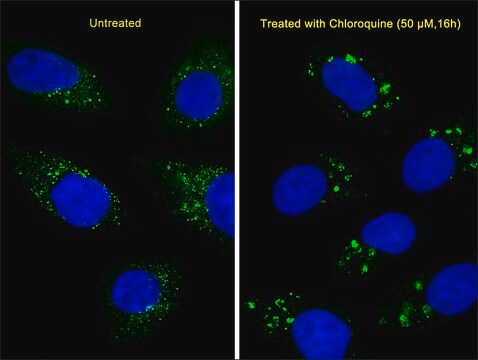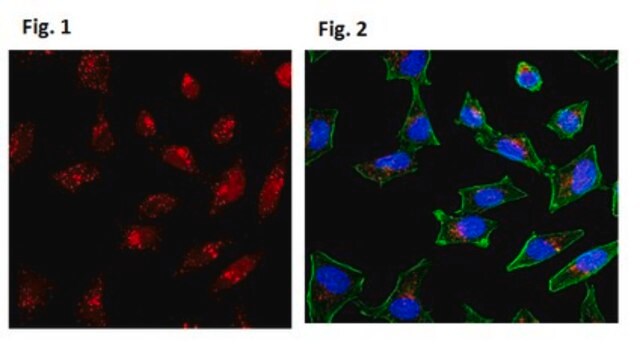SAB4200822
Anti-LC3C antibody produced in rabbit

affinity isolated antibody, buffered aqueous solution
Synonyme(s) :
Autophagy-related protein LC3 C, Autophagy-related ubiquitin-like modifier LC3 C, MAP1 light chain 3-like protein 3, MAP1A/MAP1B LC3 C, MAP1A/MAP1B light chain 3 C, Microtubule-associated protein 1 light chain 3 gamma, Microtubule-associated proteins 1A/1B light chain 3C
About This Item
Produits recommandés
Source biologique
rabbit
Forme d'anticorps
affinity isolated antibody
Type de produit anticorps
primary antibodies
Clone
polyclonal
Forme
buffered aqueous solution
Poids mol.
~16/18 kDa
Espèces réactives
human
Conditionnement
antibody small pack of 25 μL
Validation améliorée
recombinant expression
Learn more about Antibody Enhanced Validation
Concentration
~1 mg/mL
Technique(s)
immunoblotting: 1:2000-1:4000 using HEK-293T cells overexpressing human LC3C.
immunofluorescence: 1:400-1:800 using human HeLa cells treated with Bafilomycin A1
Numéro d'accès UniProt
Conditions d'expédition
dry ice
Température de stockage
−20°C
Modification post-traductionnelle de la cible
unmodified
Informations sur le gène
human ... MAP1LC3C(440738)
Description générale
Spécificité
Immunogène
Application
Actions biochimiques/physiologiques
Forme physique
Stockage et stabilité
Clause de non-responsabilité
Vous ne trouvez pas le bon produit ?
Essayez notre Outil de sélection de produits.
Code de la classe de stockage
10 - Combustible liquids
Classe de danger pour l'eau (WGK)
WGK 1
Point d'éclair (°F)
Not applicable
Point d'éclair (°C)
Not applicable
Certificats d'analyse (COA)
Recherchez un Certificats d'analyse (COA) en saisissant le numéro de lot du produit. Les numéros de lot figurent sur l'étiquette du produit après les mots "Lot" ou "Batch".
Déjà en possession de ce produit ?
Retrouvez la documentation relative aux produits que vous avez récemment achetés dans la Bibliothèque de documents.
Notre équipe de scientifiques dispose d'une expérience dans tous les secteurs de la recherche, notamment en sciences de la vie, science des matériaux, synthèse chimique, chromatographie, analyse et dans de nombreux autres domaines..
Contacter notre Service technique







